 Leading Blog | Posts by Month |
 Leading Blog | Posts by Month |
11.30.12

LeadershipNow 140: November 2012 Compilation
Posted by Michael McKinney at 01:05 AM
11.28.12

How to Avoid the Artificial Maturity Trap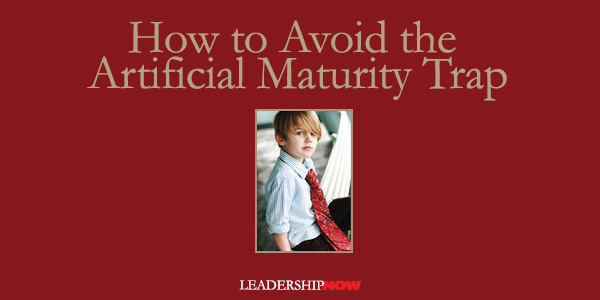
 Today, because information is so prevalent, our kids assume they have [experiential knowledge] when they only have [informational knowledge]. With an abundance of knowledge, their confidence can soar, but it’s based on a virtual foundation. Without experience, it’s easier for knowledge to produce judgmental attitudes, bullying, and arrogance. With all of this information kids think they are mature. And unfortunately, we do too. That’s part of the problem. How often have we seen a “smart” child and thought, “They are sure mature for their age.” Intelligence and maturity are not the same thing. (Of course, we see this same issue in “adults” too.) Elmore writes, “Except in rare cases, their knowledge has only entertained them. It has not produced anything real.” Elmore provides reasons for why artificial maturity has become so widespread, but his real focus is what we can do about it. To transform artificial maturity into authentic maturity, we must concentrate on four areas says Elmore:Emotional Intelligence. Mature, healthy people manage their emotions. This means developing self-awareness, self-management, social awareness, and relationship management. Character and a Sense of Ethics. Mature, healthy people live by a set of values and principles. They don’t merely react to what is going on around them. They have self-discipline, emotional security, core values, and a clear sense of identity. Strength Discovery. Mature, healthy people who become the best versions of themselves are one’s who’ve stopped trying to do everything and focused on what they do very well. This means developing their natural talents and gifts, knowledge base, heartfelt passions, and acquired skills. Leadership Perspective. Mature, healthy people live lives that don’t just revolve around themselves. They invest their lives in something beyond themselves. A leadership perspective involves a personal vision, responsibility, compassion, and initiative. Developing maturity is centered on four key areas:
In addition, Elmore believes there are four debts we owe our kids: clarity (fosters focused direction), transparency (fosters validation and vulnerability), consistency (fosters trust and assurance), and boundaries (fosters security). There is far too much information in this book to cover it here, but here are a few more ideas from Elmore: • Start inserting age-appropriate responsibility into your children’s lives right away. Avoid indulging and overprotecting them and creating hyperinflated egos. We are doing a disservice to young people if we remove their chance to fail. • Enable them to take control of their lives; to boss their calendars. Hold them accountable and responsible for the choices they’ve made and don’t bail them out. Let them see that failure isn’t final and poor judgment is not necessarily poor character. • Connect them to people (adults) outside their peer group. This generation doesn’t need you for information (they can get that without you), but they do need you for interpretation. They need mentors to help them make sense of the information and the world around them. • Communicate that there is meaning even in the small, mundane tasks. Give them a sense of the big picture and how all the little things they do fit into the big picture of history, or of the organization, or of their community. Authentic maturity is a leadership issue. Elmore concludes, “Our kids have what it takes inside of them, if we’ll just take them seriously and equip them for the future. As they enter adolescence, we must begin to treat them as young adults and train them to be both autonomous and responsible. Then, I dare you to stand back and watch them amaze you.”

Posted by Michael McKinney at 08:10 AM
11.26.12

The Four Leadership Traits of Highly Collaborative Leaders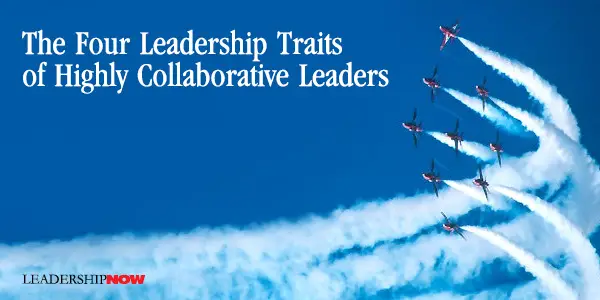
COLLABORATION taps in to a broader pool of ideas. It maximizes the talents and abilities of your people. An inclusive culture is more flexible and adaptable. People are highly motivated, work harder and are more creative. However, collaboration isn’t something you can put on. For it to work you have to believe in it. You can’t order it. Collaboration begins at the top. If leaders model it, others will too. Collaboration isn’t technique. It’s culture. If a leader believes that everything rises and falls on their talent and ability, and resources are for their sole use, collaboration is DOA. Moreover, it severely limits the organization. Ron Ricci and Carl Wiese report in The Collaboration Imperative, that there are four leadership traits of highly collaborative leaders:

Posted by Michael McKinney at 07:43 AM
11.23.12

Think Like a Futurist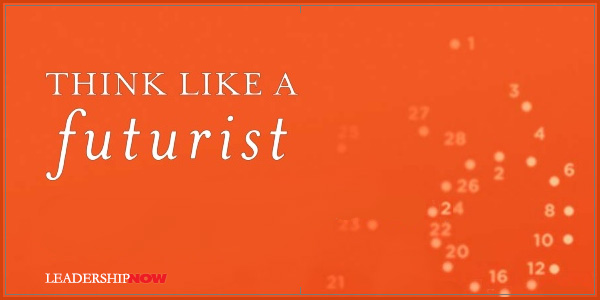
THINKING like a futurist isn’t a magical process. Practically, it is about creativity. It’s learning to step out of our present thinking to make connections with what we don’t yet know. Any good book on “future thinking” should help you do just that. Think Like a Futurist by Cecily Sommers, is just such a book. What we can imagine or create or any manifestation of future thinking must link to something that already exists in our mind. The more points of connection we have, the more possibilities we have for discovery. This is the key idea. Sommers explains, “If our capacity for prediction is limited by what we already know, then the solution is to know more about things...With a richer store of memories, we are able to imagine a vast range of possibilities, understand their nuances better, and make more of the associative links that produce our best predictions about the future.” It’s not magic. It can’t be. Sommers claims that the four building blocks of all change are: resources, technology, demographics, and governance. Resources is the foundation of the system of forces and is the slowest moving. Technology is the next and gives us the power to leverage ourselves. Demographics, both in numbers and composition is next, followed by governance which is the rule of law. Understanding how these forces work together to drive change is helpful when trying to understand the world around you and how it might impact the future. That these four forces will change is a given, the unpredictable part is how. To make the best and most informed decisions today for the future, Sommers introduces what she calls the Zone of Discovery. It is a method for “effectively accessing the imaginative power that precedes, those decisions.” Through the process, you will answer two basic questions: Who are you? and Where are you going? The answers to these questions will become a filter through which you create meaning from the information you collect and process into the best choices for you and your unique situation. The method is a way of thinking to pry you from thinking only in the present and removing you from the cycle of reactivity. Not surprisingly, developing greater self-awareness is key. She urges everyone to spend at least 5% of their time – two hours a month – on this process. Start where you are. “There’s no point in resisting or trying to change a limitation (in this case, people’s full schedules and existing commitments). You must accept things as they are and shift your focus to your First Movable Piece.” What we’re doing, at the most basic level, is reconciling dualities. Our life experience is constantly about navigating the existential tensions between objective and subjective realities, Us and Them, male and female, right and wrong, known and unknown, questions and answers, and present and future. The duality even shows up in our biology, as the two separate hemispheres of the brain indicate. Our life’s energy is spent negotiating the space in between, a place in which we find purpose, meaning, and possibility.

Posted by Michael McKinney at 03:35 PM
11.20.12

Leading Views: Good Poker Players Know When to Fold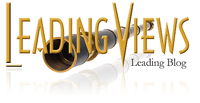 We are often controlled by habits and mindless behavior. In times of uncertainty we easily revert to the familiar, when what we need to do is explore uncharted territory. We are often controlled by habits and mindless behavior. In times of uncertainty we easily revert to the familiar, when what we need to do is explore uncharted territory.
In Adhocracy, Robert Waterman notes that “Bureaucracy gets us through the day; it deals efficiently with everyday problems. The trouble is, change ignores conventional bureaucratic lines. The real action in organizations occurs outside ‘the proper channels.’” The goal of adhocracy is change. But change efforts need to monitored and evaluated along the way at predetermined milestones. Waterman explains: Stud poker is a good metaphor for this process. In stud poker, as in product development or any other ad hoc work, you don’t know whether you have a winner until the last card has been played. But as each card is dealt, just as a project proceeds through each phase, you buy more information on the probable success of the outcome. With each card, staying in the game gets more expensive and more risky, just as each successive phase of the project tends to get bigger and more costly than the last.  Good poker players know when to fold. Managers often don’t—for several reasons: Good poker players know when to fold. Managers often don’t—for several reasons:
First, they don’t bother to break big projects up into bite-sized chunks. It lends some semblance to structure to the unknown. Second, as the project grows, more and more people’s egos and careers become invested in making sure the damned thing succeeds. Managers proceed against odds no poker player would touch because they don’t see that a failure can turn into a valuable learning experience. Finally, they don’t get rewarded for “the perfect mistake”—a good try that was called off for the right reasons.
Posted by Michael McKinney at 06:08 PM
11.19.12

Does This Doorframe Make My Head Look Big?Failure is not an option. And we learn a lot if we take the time to learn from our mistakes. But gain much more when we can learn from the mistakes of others before we find ourselves confronted with the same issues.The Wisdom of Failure by Laurance Weinzimmer and Jim McConoughey, examines the lessons learned by studying thousands of executives in hundreds of companies. They have discovered three areas where aspiring leaders fail: Unbalanced Orchestration (leadership failures at the organizational level)
The goal of the self-absorbed leader “isn’t necessarily status, position, or promotion. Rather, their goal is to have things work out the way they think they should work, because, well, they are the greatest.” This is an easy mindset to slip into. And unfortunately, it is almost impossible for a self-absorbed leader to recognize that they are just that. They need outside help, but when confronted, they are sure that the observation is of course, wrong. Underneath is all, self-absorption is “rooted in low self-esteem and a feeling of insecurity, as well as a profound discomfort with or disregard for what others bring to the table.” It is marked by “talking big, a sense of entitlement, a sense of infallibility, a lack of empathy for others, an intense desire to win at all costs, one-upmanship, a know-it-all attitude, and an inability to listen.” Michael Bryant, CEO of Centra Health explained it this way: “A good leader is like a coach of a basketball team. It is not important for the leader to score the points. It is important for his team to score the points. It’s not rocket science! So the one key to being an egoless leader is to understand the paradox….Self-absorbed leaders never get the paradox.” 
Posted by Michael McKinney at 10:55 PM
11.15.12

Resilience: How We Can Learn to Bounce Forward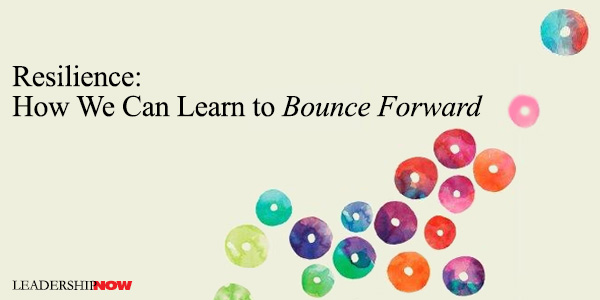
ALL OF US will be tested from time to time on our ability to adapt—on our resilience. The goal of resiliency is not necessarily to bounce back, but to bounce forward. It is the ability to maintain your purpose even while adapting your methods. “If we cannot control the volatile tides of change, we can at least learn to build better boats,” write Andrew Zolli and Ann Marie Healy in Resilience. “We can design—and redesign—organizations, institutions, and systems to better absorb disruption, operate under a wider variety of conditions, and shift more fluidly from one circumstance to the next.” Resilience-thinking is not the same thing as being in a defensive mode. It’s engaging the world in a different way. They discuss tight feedback loops, dynamic reorganization, built-in countermechanisms, decoupling, diversity, modularity, simplicity, swarming, and clustering, as proactive ways to encourage resilience. They don’t give check-lists or quick fixes (indeed, there are none) so you’ll have to think about the ideas they offer. Most of the ideas are quite useful in principle on a personal level. TRANSLATIONAL LEADERS Interestingly—but not surprising—they found that resilient communities had a special type of leader: a translational leader. “These leaders demonstrated an uncanny ability to knit together different constituencies and institutions—brokering relationships and transactions across different levels of political, economic, and social organization.” They were leading from the middle out. Translational leaders do not dispense with hierarchies; they recognize and respect their power. Instead, standing at the intersection of many constituencies, translational leaders knit together social networks that complement hierarchical power structures. Rooted in a spirit of respect and inclusion, these complementary connections ensure that when disruption strikes, all parts of the social system are invested, linked, and can talk to one another. It sounds like they have a high degree of emotional intelligence or ego-control. That necessitates a leader that is reflective and operates from strength rather than weakness; a grounded mindful leader. ADHOCRACY Many of the lessons learned from the disruptions discussed in the book boil down to adhocracy, say the authors. Adhocracy is adaptive, creative, flexible, and non-permanent organizational style. “In the digital age, an adhocracy can be put together in a plug-and-play, Lego-like way, well suited in fast-moving, fluid circumstances where you don’t know what you’ll need next. If it were a musical genre, adhocracy would be jazz.” (Robert Waterman on Adhocracy.) They caution: “When systems are structurally overconnected … or when interventions are bureaucratically imposed on communities rather than developed with them, there is no space for adhocracy to germinate.” Of course formal organizations have a role to play. “But when we focus too strongly on them as the sole actors in response to a disruption, we don’t just ignore, but can actually smother the opportunities for these kinds of successful, improvisational approaches to emerge.” 
Posted by Michael McKinney at 12:22 PM
11.12.12

The Eight Pillars of Trust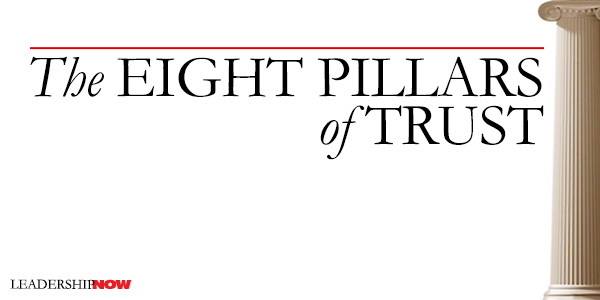
EVERYTHING of value is built on trust. The Trust Edge explains how you and your organization can become trusted. A lack of trust is your biggest expense. It is the currency of business and life. Author David Horsager, explains that trust is tangible, learnable, and measureable. Trust is a confident belief in someone or something to do what is right, deliver what is promised, and to be the same every time in spite of circumstances. Horsager identifies twelve barriers to trust: conflict of interest, threat of litigation, lack of loyalty, increasing examples of others untrustworthiness, threat of exposure, lack of control over technology, fear of the unknown, negative experiences, individualism, differences between people, desire for instant gratification, and a focus on the negative.
The eight pillars of trust form the framework for learning to build trust and overcoming the twelve barriers. These all take time and are not quick fixes for any trust issue. Trust is built over time. Clarity. Clarity starts with honesty. People trust the clear and distrust the vague. Communicate clearly and frequently. Compassion. Think beyond yourself. There are four keys ways we show we care: listen, show appreciation, be engaged, and serve others. Character. Have high morals and be consistent in your thoughts, words, and actions. Always ask, “Am I doing the right thing?” Competency. Humility is the first step in learning. Create a regular plan for staying competent and capable. Commitment. Great leadership demands sacrifice. The people who stick with you when things are tough are the ones you can really trust. Connection. Trust is about relationships. In every interaction we increase or decrease trust. Be genuine, be grateful and avoid gossip. Contribution. You must deliver results to be trusted. Give attention, resources, time, opportunity, and help. Consistency. Probably the most important pillar of all as it gives meaning to all of the other pillars. You will never get one big chance to be trusted in your life; you will get thousands of small ones. Just one inconsistency can change people’s perspective. Horsager notes that in this flat world, because we can connect with so many, we have a hard time cultivating depth. Trust at its best is deep, making it difficult to gain the trust edge. In response we need to be even more intentional about developing the pillars of trust on a global level finding common ground and showing ourselves to be trustworthy.

Posted by Michael McKinney at 11:57 PM
11.05.12

Next Time You’re in a Slump, Try Stillpower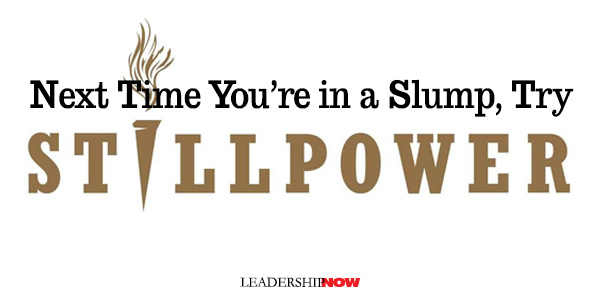 WHEN our performance is in a slump or we get stuck, we tend to become anxious and reach for any quick fix or technique that promises to get us out of it. We apply more effort, focus, and willpower. And when all of that doesn’t work, we get even more anxious and our performance heads even further south.
WHEN our performance is in a slump or we get stuck, we tend to become anxious and reach for any quick fix or technique that promises to get us out of it. We apply more effort, focus, and willpower. And when all of that doesn’t work, we get even more anxious and our performance heads even further south.
Instead, when we get stuck we need to rely on Stillpower, not willpower says Garret Kramer. Stillpower is the ability to return to a clear mindset after we get into a muddled mental state—a low state of mind. It’s knowing that “all sentiments are temporary since they originate from your own thoughts and moods. Stillpower comes from knowing that self-worth has nothing to do with winning, losing, parental approval, money, fame, or anything external to you.” When we get into a low state of mind we need to do nothing. It’s when we operate from a low state of mind that we usually make mistakes, poor judgments, miss opportunities and dig ourselves deeper into whatever hole we are digging. “Once you understand,” says Kramer, “that as human beings we form our perceptions from the inside out, that the quality of our thinking and level of awareness move up and down independent of our circumstances, you will see that it makes little sense to work yourself through a temporarily low state of mind.” But that’s often exactly what we do. When we run into trouble that’s a sign to step back—not a call to action. Negativity is a sign to slow down. We can't perform at an elevated level when we are in a low state of mind. A seemingly unresolved issue of today has nothing to do with erroneous thinking of today. And until an individual comes to this realization, he or she will always fall prey to the conditions of life itself. Awareness is key. When you are aware of your thoughts and feelings in the moment and when necessary, allow your thinking to clear, then you will have the clarity to act; “insights will flow and answers will become obvious.” He adds, “Insight is infinitely more powerful than willpower. Actually, insight, or having a new idea and/or a change of heart, erases the need for strength or force of will of any kind.” COACHING Kramer notes that when you are coaching or counseling, you need to be operating from a higher level of thinking than the person you are talking to. “What comes out of your mouth is much less significant than the level of mental functioning from which the words are spoken.” We need to interact with people from a state of mind “brimming with love, compassion, and selflessness….External how-to resources are not all that necessary; love will provide all the direction you seek.” Leadership is an all-in proposition. Done right, it’s a lot of hard work. To cut ourselves some slack, we too often rely on external gimmicks and techniques rather than the messy work of a real relationship. IDEAS TO CONSIDER • “We perform better when we get caught up in the experience, rather than when we make the experience about us….When we focus on a personal prize, our options narrow; when we relish the process, our options expand.” • “When we act from clarity, it is impossible to get weighed down by judgmental outcomes.” • “When we succumb to our errant thoughts or closed-off moods, judge another person, and then act from this egotistical perspective of insecurity, it is practically impossible to find long-term success.” • “Every failure, every mistake, every loss—occurs to clarify our path, not to obscure it.” • “You will never wrestle with a choice when your level of consciousness is high.” Leaders will find a lot to consider here. Stillpower is one of those books that makes you reconsider your approach on many things. While Kramer might seem to be throwing the baby out with the bathwater at times, he doesn’t overturn conventional wisdom as much as he calls us on it when we misapply it. It is the perfect prescription for those that have a need to control their world and the people around them. It is important to note too, that looking within for answers is fine if you have consciously put something there to draw-on in the first place. Good flashes of insight are only produced when there is something good to draw upon. Choose your sources wisely. 
Posted by Michael McKinney at 03:57 PM
11.01.12

First Look: Leadership Books for November 2012Here's a look at some of the best leadership books to be released in November.




For bulk orders call 1-800-423-8273  Build your leadership library with these specials on over 120 titles. All titles are at least 40% off the list price and are available only in limited quantities. “No two persons ever read the same book.” — Edmund Wilson
Posted by Michael McKinney at 01:03 AM
|
BUILD YOUR KNOWLEDGE


How to Do Your Start-Up Right STRAIGHT TALK FOR START-UPS 
Grow Your Leadership Skills NEW AND UPCOMING LEADERSHIP BOOKS 
Leadership Minute BITE-SIZE CONCEPTS YOU CAN CHEW ON 
Classic Leadership Books BOOKS TO READ BEFORE YOU LEAD |
|